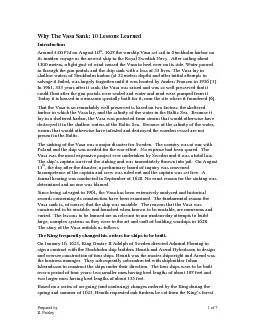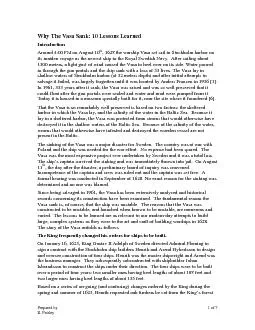PDF-Prepared by 1 of 7 R. Fairley Why The Vasa Sank: 10 Lessons Learned In
Author : phoebe-click | Published Date : 2015-10-16
Prepared by 2 of 7 R Fairley for two 108foot ships and one 135foot ship On September 20 1625 the Swedish Navy lost ten ships in a devastating storm The King then
Presentation Embed Code
Download Presentation
Download Presentation The PPT/PDF document "Prepared by 1 of 7 R. Fairley Why The Va..." is the property of its rightful owner. Permission is granted to download and print the materials on this website for personal, non-commercial use only, and to display it on your personal computer provided you do not modify the materials and that you retain all copyright notices contained in the materials. By downloading content from our website, you accept the terms of this agreement.
Prepared by 1 of 7 R. Fairley Why The Vasa Sank: 10 Lessons Learned In: Transcript
Download Rules Of Document
"Prepared by 1 of 7 R. Fairley Why The Vasa Sank: 10 Lessons Learned In"The content belongs to its owner. You may download and print it for personal use, without modification, and keep all copyright notices. By downloading, you agree to these terms.
Related Documents














